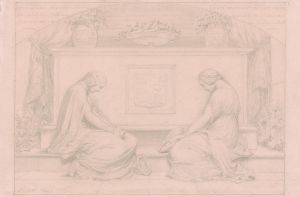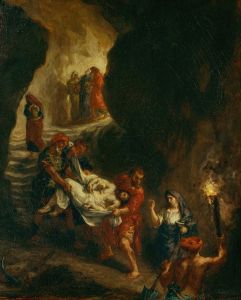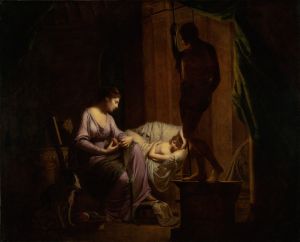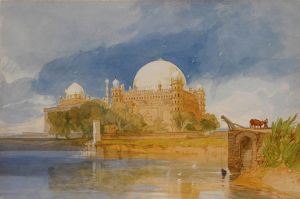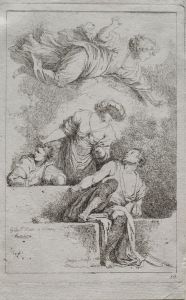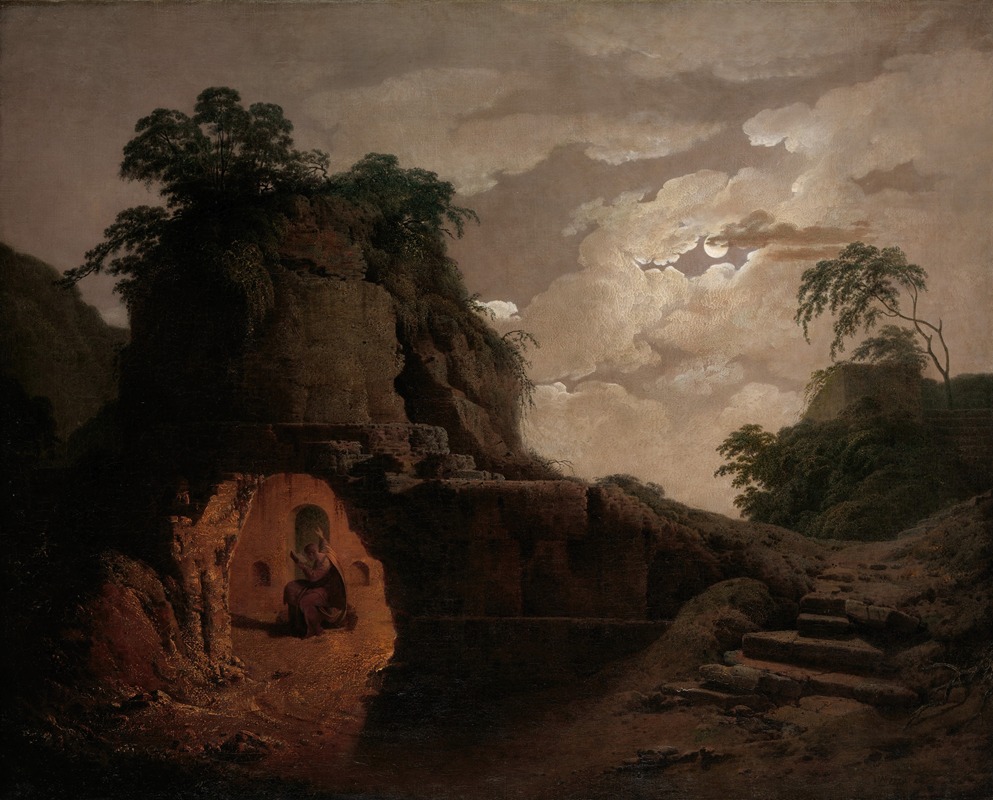
Virgil’s Tomb by Moonlight, with Silius Italicus Declaiming
A hand-painted replica of Joseph Wright of Derby’s masterpiece Virgil’s Tomb by Moonlight, with Silius Italicus Declaiming, meticulously crafted by professional artists to capture the true essence of the original. Each piece is created with museum-quality canvas and rare mineral pigments, carefully painted by experienced artists with delicate brushstrokes and rich, layered colors to perfectly recreate the texture of the original artwork. Unlike machine-printed reproductions, this hand-painted version brings the painting to life, infused with the artist’s emotions and skill in every stroke. Whether for personal collection or home decoration, it instantly elevates the artistic atmosphere of any space.
"Virgil’s Tomb by Moonlight, with Silius Italicus Declaiming" is a painting by the renowned English artist Joseph Wright of Derby, created in 1779. Joseph Wright is celebrated for his distinctive use of chiaroscuro and his ability to capture the interplay of light and shadow, which is evident in this particular work. The painting is a fine example of Wright's fascination with the sublime and the romantic themes that were prevalent during the 18th century.
The artwork depicts a nocturnal scene set at the tomb of the ancient Roman poet Virgil. The tomb is located in Naples, Italy, and has been a site of literary pilgrimage for centuries. In the painting, the tomb is bathed in the ethereal glow of moonlight, which is a testament to Wright's skillful manipulation of light to create mood and atmosphere. The moonlight casts a serene and almost mystical aura over the scene, enhancing the romantic and contemplative nature of the setting.
In the foreground of the painting, the Roman poet Silius Italicus is portrayed declaiming. Silius Italicus was a notable figure in Roman literature, known for his epic poem "Punica," which recounts the Second Punic War. He was also an admirer of Virgil and reportedly purchased Virgil's tomb, where he would perform rituals and recitations in honor of the great poet. Wright's inclusion of Silius Italicus in the painting serves to emphasize the enduring influence of Virgil's work and the reverence it inspired in subsequent generations of poets and scholars.
The painting is characterized by its dramatic use of light and shadow, a hallmark of Wright's style. The moonlight illuminates the tomb and the figure of Silius Italicus, creating a stark contrast with the surrounding darkness. This technique not only highlights the central figures but also imbues the scene with a sense of mystery and reverence. The composition draws the viewer's eye towards the tomb, inviting contemplation of the legacy of Virgil and the timeless nature of his poetry.
Wright's choice of subject matter reflects the 18th-century fascination with classical antiquity and the romantic idealization of the past. The painting captures a moment of quiet reflection and pays homage to the enduring power of literature and the arts. It also exemplifies the romantic interest in the sublime, as the tranquil yet awe-inspiring scene evokes a sense of wonder and introspection.
"Virgil’s Tomb by Moonlight, with Silius Italicus Declaiming" is housed in the collection of the Derby Museum and Art Gallery in Derby, England. The painting remains an important work within Wright's oeuvre, showcasing his mastery of light and his ability to convey complex themes through his art. It continues to be appreciated for its artistic merit and its evocative portrayal of a moment steeped in historical and literary significance.






